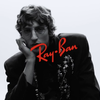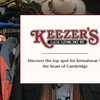{shortcode-e0831873a1a40deb4997e3f5ce196dedee654304}
On Sept. 12, the Harvard Art Museums opened “Sketch, Shade, and Smudge: Drawing from Gray to Black.” This new exhibit — curated by Penley Knipe, Senior Conservator of Works of Art on Paper and Head of the Paper Lab and Miriam Stewart, Curator of the Collection for the Division of European and American Art — is comprised of art done by tools that could be found in a childhood pencil box.
Stepping into the exhibition, the black-and-white drawings contrast with the muted, neutral walls. On a survey of the space, however, the exhibition lacks any notable focal point to draw in the eye. The only visual standouts of the exhibit are the large black labels for each category highlighting a different drawing technique – such as “Smudge, “Gesture,” or “Edge” — but even then they are sometimes hidden depending on where the viewer stands. This setup of the categories makes it confusing to distinguish the boundaries of a category, creating a maze that viewers must navigate.
Considering the selection of sketches themselves, the curators of “Sketch, Shade, Smudge” provided a brilliant array of meaningful artwork drawn with different tools, from charcoal to crayons. In addition, the distinct style of the artwork within each category provided an unexpected dimension to the monochromatic exhibit.
Among all the sections, “Smudge” is the largest, featuring visitors attempting to create their own drawing. Nestled in a corner of the exhibit space, the activity faces several artworks, providing a quiet space for visitors to try their hand at working with the different tools. This interactive opportunity stands out as the highlight of the exhibit.
Among the highlights of “Smudge” is John Singer Sargent’s “Study of Two Draped Women,” a dreary scene depicting two women holding their heads down and covering their faces. This particular artwork stands out by emphasizing the technical underpinnings of the well-known painter. The charcoal used to draw the figures is well blended in contrast to the white background, amplifying their figure as the technique is meant to. However, there are so many works in the “Smudge” category that it is overwhelming to fully reach an understanding of what the curators wanted to emphasize.
On the opposite spectrum, the “Gesture” category contains messy lines, mimicking movement and fluidity. In “Gesture,” the most striking work is “Untitled” by Joel Shapiro. This sketch takes up nearly an entire wall — the sketch itself is dark, depicting strict rectangular objects that sit on top of each other and one bold blue block in the center of the piece. The artwork replicates human emotions by using messy, unstructured blocks to represent the complicated nature of human feelings.
The exhibit as a whole feels quite dreary, with the nearly monochrome palette creating a gloomy environment throughout. However, the absence of color ultimately allows viewers to focus on the techniques that can be used with crayon, charcoal, chalk, and graphite, successfully bringing out the often overlooked merit and characteristics of each medium.
“Sketch, Shade, and Smudge” is on display in the Special Exhibitions Gallery of the Harvard Art Museums until Jan. 18, 2026.
—Staff writer Jenna Jiang can be reached at jenna.jiang@thecrimson.com.













